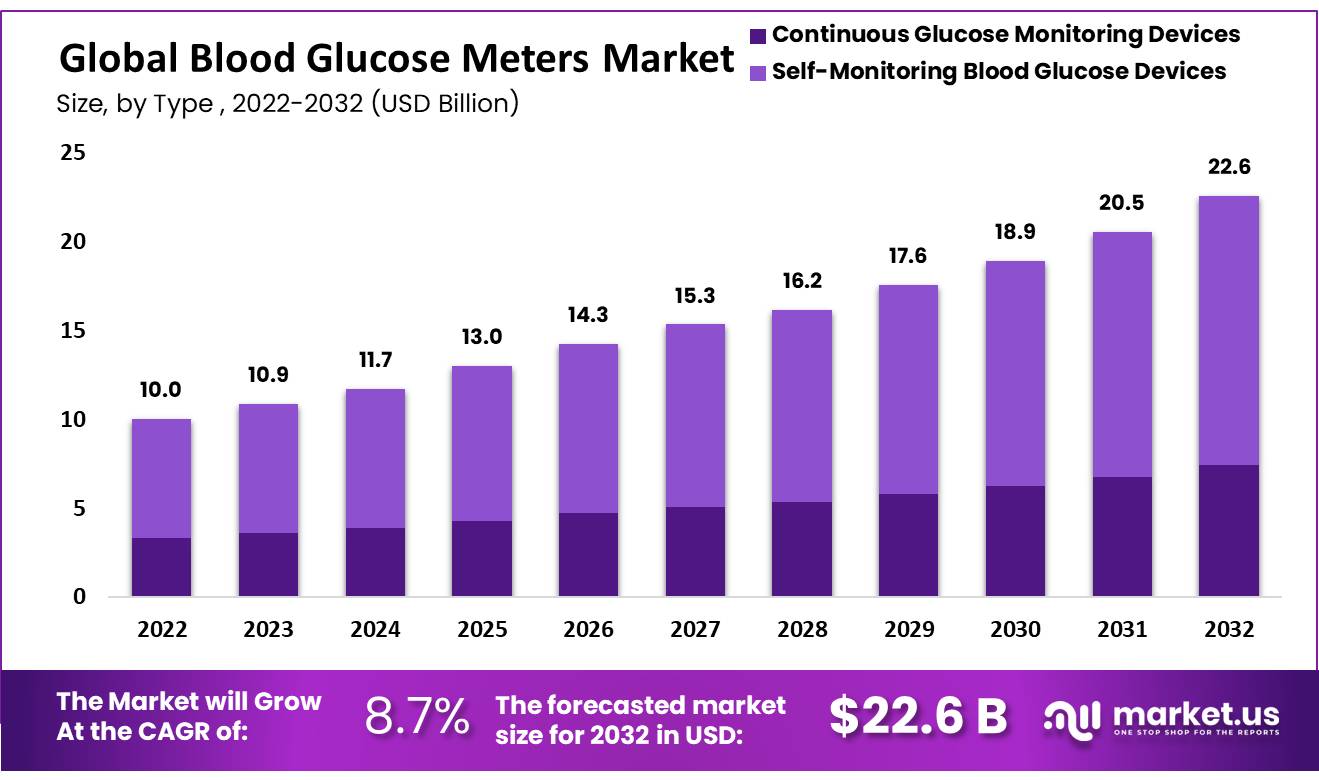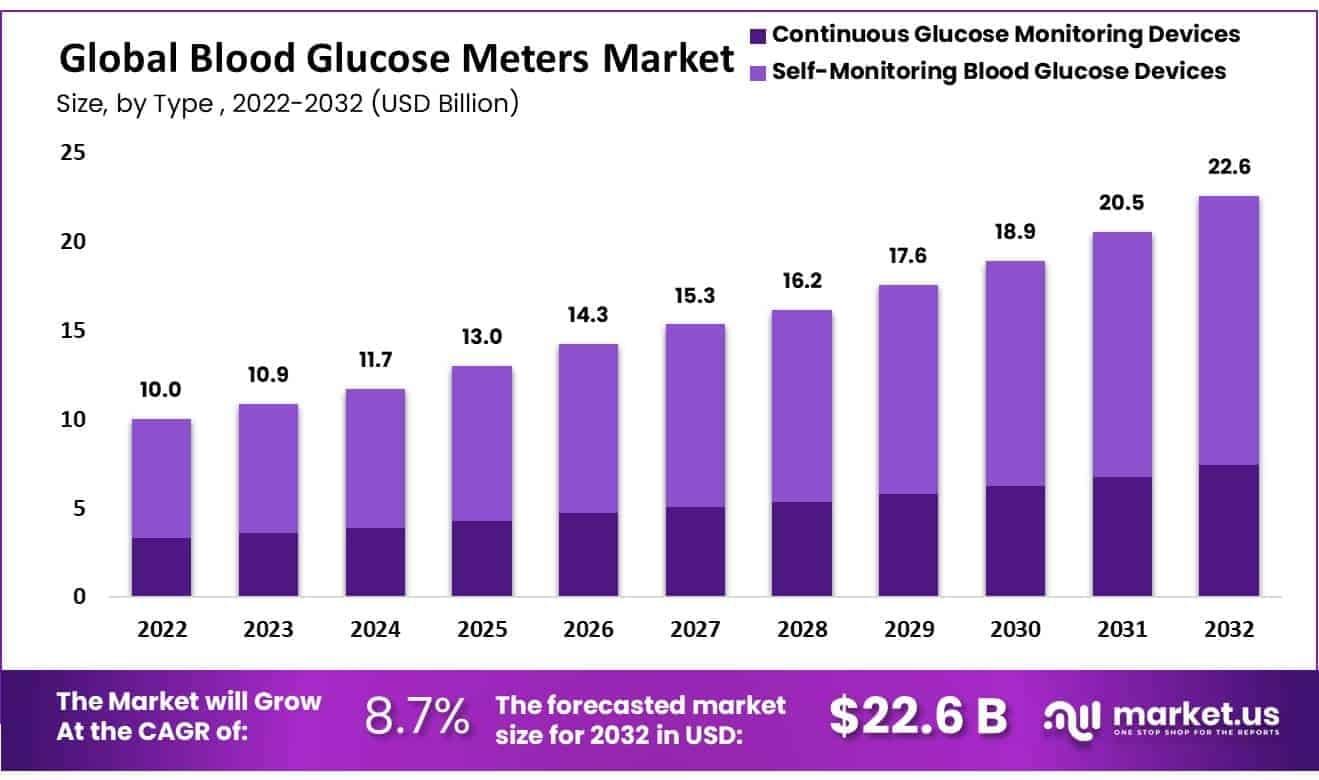The Global Blood Glucose Meters Market size is expected to be worth around USD 22.6 Billion by 2032 from USD 10 Billion in 2022, growing at a CAGR of 8.7% during the forecast period from 2022 to 2032.
In 2025, the Blood Glucose Meters Market is advancing through sensor fusion and pain-minimizing technology. New generation meters require ultra-small blood samples—just 0.1 µL—using microneedle patches or laser-sampling techniques. Some devices combine temperature, sweat, and interstitial-fluid sensing to cross-validate readings, reducing finger-pricks by up to 70%. These hybrid systems provide more comfort and convenience, encouraging testing adherence.
Continuous-clustering algorithms detect sensor drift and automatically calibrate to maintain accuracy. As pain-free sampling becomes mainstream, these devices are expected to redefine self-monitoring practices and elevate daily glucose management for millions.
Click here for more information: https://market.us/report/blood-glucose-meters-market/
Key Market Segments
Based on Type
- Continuous Glucose Monitoring Devices
- Self-Monitoring Blood Glucose Devices
Based on Distribution Channel
- Offline Stores
- Online Platforms
Based on End-User
- Healthcare
- Pharmacies
- Home Care
- Diagnostic Centres
Emerging Trends
- Microneedle strip meters that harvest minute blood volumes with minimal sensation.
- Passive sweat glucose sensors fused with periodic finger-stick validation.
- Temperature and humidity compensation to improve sensor accuracy.
- Auto-calibrating algorithms correcting for drift over time.
Use Cases
- A user tests before breakfast using a microneedle patch with no noticeable pain.
- A hybrid sensor reports glucose alongside sweat-insight trends for better daily correlation.
- A blood-glucose device adjusts readings dynamically based on skin temperature.
- Auto-calibration runs after week-long use, maintaining meter precision without user steps.


